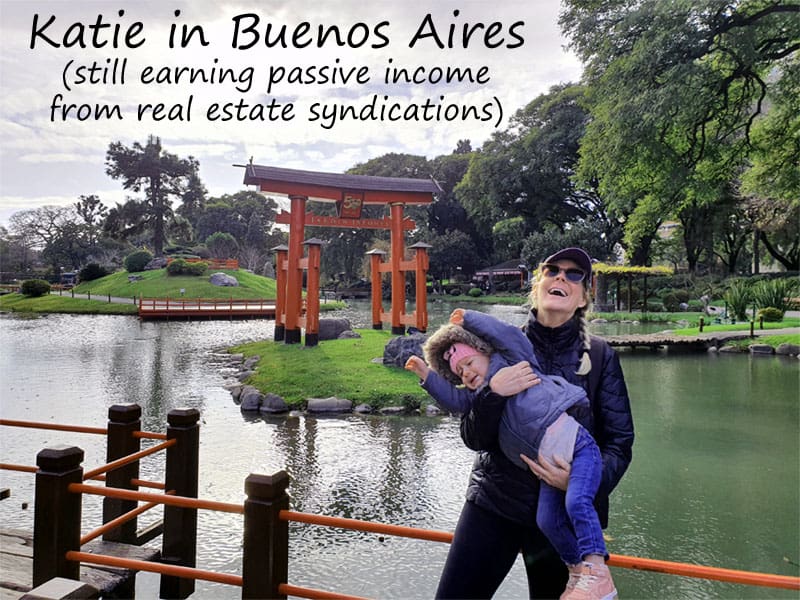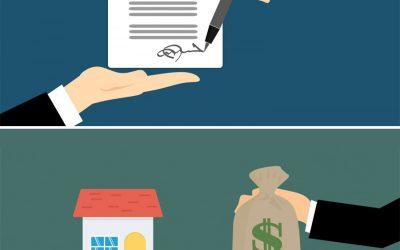
If you earn $1 on a $0 investment, what’s the rate of return?
What about $100? $1,000?
The answer’s the same: any return on a $0 investment is an “infinite return,” since you’re dividing into zero. You earn something on an investment of nothing.
But how does that actually work in the real world? Doesn’t it “take money to make money” and all that?
Sort of.
What Are Infinite Returns?
When you invest money in real estate — or anything else, for that matter — you ideally earn a return on it. But real estate comes with a unique advantage over other assets: you can borrow money against it relatively cheaply, at a high loan-to-value ratio (LTV).
Even better, you can force appreciation through property improvements. That combination means you can buy a fixer-upper, renovate it to boost the value and create equity, and then refinance it to cash out that newfound equity. And in doing so, pull your original down payment back out of the property, potentially leaving you with $0 of your own cash invested in it.
Every dollar you earn in returns from that point onward represents an infinite return on your $0 investment in the property.
You can earn infinite returns on direct property investments or through real estate syndications.
Infinite Returns on Rental Properties: The BRRRR Method
The strategy of buying rental properties directly and renovating them has a name: the BRRRR method.
The acronym BRRRR stands for buy, renovate, rent, refinance, repeat. It works particularly well with 1-4 unit residential properties, but you can also do it with 5+ unit apartment buildings. For residential properties with up to four units, you can refinance with a conventional mortgage or a portfolio loan, typically up to 80% LTV but possibly up to 85%.
It works because the refinance loan amount is based on the after-repair value (ARV) of the property, not what you paid for it. You create equity by renovating the property, and then cash out that equity. Try Credible to compare conventional mortgages, or Kiavi or Forman Loans for portfolio loans.
Once you pull your money out of the property, it frees you to reinvest it in another property. You can use the same down payment over and over again to keep building your real estate portfolio.
Bear in mind that the more you leverage your properties, the lower your cash flow will be. Make sure you don’t take on so much debt that you lose money on your properties each month.
Infinite Returns on Real Estate Syndications
The same model works with apartment complexes, just on a larger scale.
A syndicator or sponsor finds a property that needs updating, what they call a value-add deal. They take out a loan to cover some of the purchase price, and they cover the rest of the costs with both their own cash and by raising money from private investors (called limited partners or LPs). As an LP, you invest passively in the project and become a fractional owner.
The sponsor spends the next year or two renovating the exterior, the common areas, and the interior of each unit. This drives up the market rent for each unit, so the net operating income rises. That in turn drives up the value of the property, since income properties like apartment buildings are priced based on the income they generate.
Once all renovations are completed and the rents are stabilized at new higher prices, the sponsor can refinance the property based on the new higher value. They pay back the passive investors’ capital, but all investors retain their ownership share in the property.
Again, the cash flow will drop, based on the new higher debt. But investors keep collecting cash flow on the property, even though they already got their initial investment back. As with the BRRRR strategy, you can then reinvest that money in more properties or syndications, snowballing your passive income from real estate.
Risks & Challenges with Infinite Returns
Earn real estate cash flow without having any of my own money tied up in properties? What’s the catch?
While there’s no catch per se, there are risks and challenges. The first of those I touched on above: more debt means less cash flow per property. If you leverage your properties too much, you run the risk of negative cash flow.
For direct property investments, that also means you need far more properties to create the same amount of net rental income. That means more labor: finding deals on properties, hiring and overseeing property managers, accounting, and so forth. The labor gets even more intense if you self-manage your properties.
Some investors rapidly expand their portfolio with the BRRRR method, let the properties appreciate and generate more cash flow over time as rents increase, and eventually sell some of their portfolio to pay off the loans on their remaining properties. That eventually leaves them with a smaller number of properties that cash flow well and require less labor to oversee.
On the syndication side, you don’t have to worry about labor in managing more properties. But you do need to find new investments to redeploy your capital as you get it back after refinances. Still, finding good passive investments is far easier than finding good deals on properties to buy directly.
Finally, you do need money to invest in the first place. That initial down payment for a rental property could still cost you $50,000 or more, which says nothing of closing costs or the money you need to put up for the renovation. Sure, most purchase-rehab loans for investment properties reimburse you for renovations, but you still need to come out of pocket for each draw before the lender reimburses you. Syndications also require $50-100K as a minimum investment, unless you pool funds for group real estate investments (like we do in our Co-Investing Club).
(article continues below)
How Realistic Are Infinite Returns?
Infinite returns are an incredibly powerful way to build streams of income from real estate. You can reinvest the same $50,000 in property after property, syndication after syndication. Each one adds another passive income stream, without you having to keep coming out of pocket to invest.
But as powerful as the concept is, it rarely works out in the real world the same way it works on paper. In most cases, you can’t actually pull out every single dollar you invested in an investment property or syndication. You often get back 50-80% of your initial investment, but not all of it.
That means that you rarely earn true “infinite returns” on your investment. Instead, you earn high “cash on remaining equity” or cash on equity, but it’s not infinite since you have more than $0 still invested in the property.
For example, imagine you invest $5,000 in a syndication as a member of our Co-Investing Club. After two years, the sponsor refinances the property and returns $4,000 to you. Up to that point, you had been earning 5% cash-on-cash return ($250/year on your $5,000 investment). After the refinance, you still earn $150/year on your remaining $1,000 tied up in the property: a 15% return on your remaining equity investment. Over the next five years, the cash flow gets even better as rents rise, and by the end you’re earning 20% each year. Then the sponsor sells the property and you collect a hefty payout for your ownership interest.
In the meantime, you were able to reinvest that $4,000 in another deal and earn cash flow from that too. You start rolling the snowball down the mountain, adding new sources of income with each new deal you invest in.
Final Thoughts
Whether you can pull every single dollar back out of a property is beside the point. You can still pull a lot of your initial investment back out, while keeping your ownership in each property. That lets you keep reinvesting and growing your portfolio, keep adding new passive income streams, and keep adding properties that each appreciates over time.
In other words, you build a portfolio of assets with mostly other people’s money. You get all the investment property tax deductions, the cash flow, and the appreciation, while lenders provide most of the capital. And then your renters pay down the loans for you.
Not a bad investment strategy, eh?♦
Have you ever earned infinite returns on an investment property? What challenges are you encountering, pursuing infinite returns?
More Real Estate Investing Reads:
Who’s the Author?

G. Brian Davis is a real estate investor and cofounder of SparkRental who spends 10 months of the year in South America. His mission: to help 5,000 people reach financial independence with passive income from real estate. If you want to be one of them, join Brian and Deni for a free class on How to Earn 15-30% on Fractional Real Estate Syndications.



























Interesting concept. Never thought of the BRRRR method in these terms, but it makes sense. Food for thought.
Glad to hear we got you exploring some new ideas JP!
Didn’t realize some real estate syndications refinanced and returned much/all of the initial investment back to you. Going to look into doing some of these deals, intriguing way to compound your returns.
Keep us posted on your progress Jessica!
People are getting more and more creative when it comes to passive income. I love it
This model has actually been around for a while among wealthy investors, but middle-class investors have only caught on in the last 15 years or so. And that is exactly our mission: helping middle-class investors earn outrageously high returns like the wealthy do.
Fantastic concept! This is new to me, still wrapping my head around it. Might start with some passive real estate investments through your investing club.
Glad to hear it Moises!
Took me a minute to wrap my head around this idea of infinite returns. Then it blew my mind. Planning on joining your coinvesting club to invest in some of these deals where the syndicator refinances and returns capital, might later try my hand at a BRRRR strategy deal.
Looking forward to investing alongside you Isha!